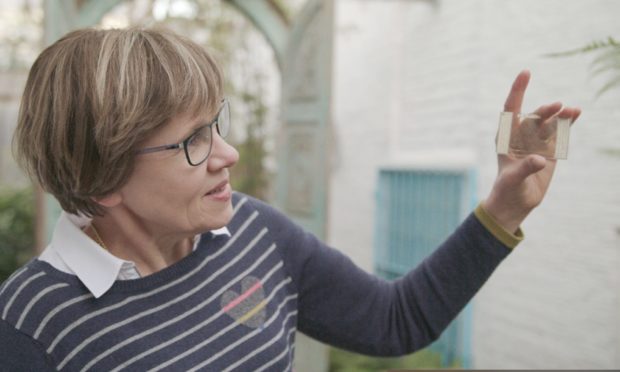It looks like any overgrown field in the middle of the Scottish countryside.
But below the surface is the Earth’s earliest and best preserved clues as to how plants and animals evolved to live on land more than 400million years ago.
A century after the first fossils were discovered on the outskirts of the village of Rhynie, Aberdeenshire, there are now calls for the land, hailed “one of Scotland’s geological jewels”, to be made a World Heritage Site, alongside Australia’s Great Barrier Reef and Yellowstone National Park in America.
This is because the hard chert rocks found at the Rhynie site, a petrified peat bog, contain the remains of the world’s oldest known fully preserved land ecosystem, dating back 407million years to the early Devonian era.
Christine Strullu-Derrien, a scientific associate at the Natural History Museum in London, who has been studying the prehistoric rocks for the past 20 years, said: “This site is unique in the world and should be promoted more.
“In this site everything is preserved, the animals, plants, bacteria, algae, fungi – everything is in the same locality and we can use that to explain how ecosystems worked at that time.
“It’s like a treasure.”
The fossils are so well preserved that over the past 100 years scientists have discovered a variety of species of plant, fungi, insects as well as primitive spiders and most recently a new type of amoeba.
The discovery is helping Mrs Strullu-Derrien and her colleagues around the world work out how life on land started and when the relationships between plants and early life forms began.
It is not the earliest evidence of plants on land but the fossils contain the oldest complete ecosystem ever discovered. This is due to the way the plants grew and the way they were preserved.
The site, owned by NatureScot, formerly Scottish Natural Heritage, is a designated Site of Special Scientific Interest (SSSI) but Mrs Strullu-Derrein believes it deserves more recognition.
She said: “It should be a World Heritage Site because it is so unique.
“I have visited the site and I know it is all underground but there was no museum, nothing. I was surprised because it really is the only one of its kind and I think people should know the value of the site.
“It deserves that, at least something for the population because it’s their heritage and they should know about it.”
Katherine Leys, NatureScot’s head of biodiversity and geodiversity, hailed the site a “geological jewel”.
She said: “The Rhynie chert fossil deposit provides a globally important and unique glimpse 407 million years into the past. The hard chert rock contains a truly remarkable variety of early plants and animals, including nematode worms and spider-like arthropods.
“The plants and animals together represent the fossil evidence of the world’s earliest, most complete terrestrial wetland ecosystem.
“The fossils are so perfectly preserved that individual plant cells can be seen, as well as evidence of plant and animal interactions.
“The Rhynie chert was formed in association with hot springs akin to those found today in Yellowstone National Park in the US.
“Without doubt, the Rhynie chert is one of the world’s most important fossil localities and represents another one of Scotland’s many geological jewels.
“We welcome the interest of the local community and other stakeholders in protecting and promoting the site.“
